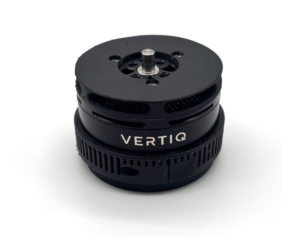 Vertiq has designed its next generation of modules to accommodate Add-Ons to meet customer needs.
Vertiq has designed its next generation of modules to accommodate Add-Ons to meet customer needs.
One of Vertiq’s goals for these modules is ensuring the system is able to handle a variety of environmental factors, such as sand, dust, and water. With these Add-Ons, the max IP rating of Vertiq’s next generation modules is IP45. Jon Broome at Vertiq explains how the company achieves this rating.
For a BLDC motor, too much dust or sand in the coils will add friction, making it less efficient. Too much exposure to water will wash away the bearing grease, limiting the lifetime of the motor. For ESCs, dust and sand do not have much impact on performance, but exposure to water could cause a short, which would result in a critical mid-flight failure. Protecting the motor and ESC from solid and liquid ingress will allow the propulsion system to operate in hazardous conditions and prolong its life, allowing for more reliable and versatile aircraft.
There are three areas of the module that require attachments to maximize IP rating: the top of the rotor, the middle section beneath the coils, and the bottom of the stator. Vertiq has therefore created a Rotor Cover, Coil Guard, and Stator Cover, respectively, to protect these areas from solid and/or liquid ingress. Before looking at the Add-Ons, it is important to understand the IP rating of the core motor and ESC to which Add-Ons are attached, as well as the Default configuration of the module.
The article explores:
- Base Module
- Default Module
- Rotor Cover Add-On, Coil Guard Add-On and Stator Cover Add-On
- IP Rating Chart









